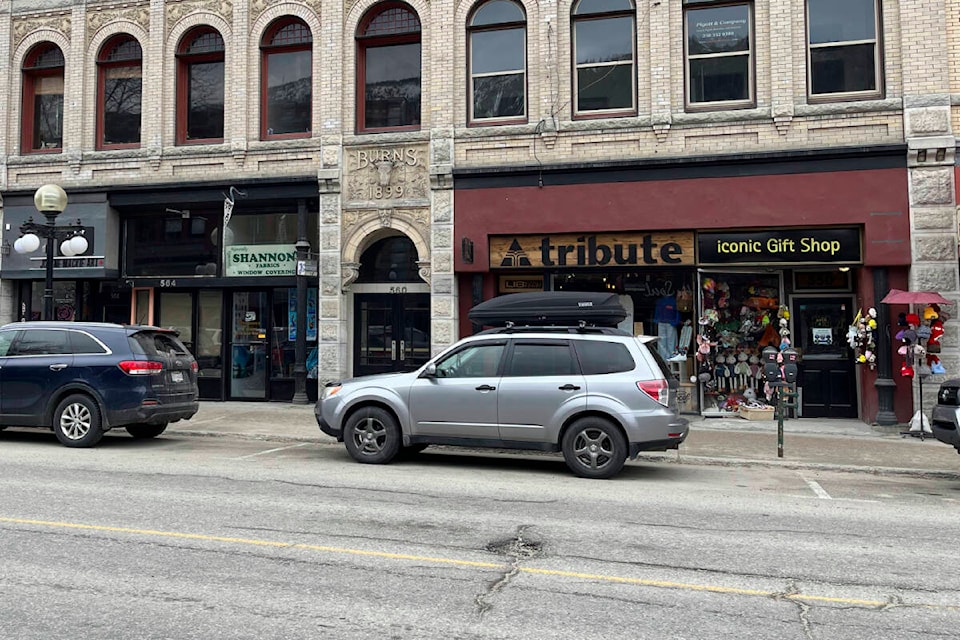The fate of a Nelson man accused of killing an off-duty Abbotsford police officer balances on whether or not a judge believes he acted in self-defence.
Defence and Crown counsels made their final arguments last week in the case of Alex Willness, who faces a manslaughter charge in the July 16, 2020, death of off-duty Abbotsford police officer Allan Young. Willness brought his skateboard down onto the head of Young, who died five days later.
There was no debate in the B.C. Supreme Courtroom about whether or not Willness hit Young with his skateboard. But the circumstances surrounding the hit, and how to interpret a video of the incident, now weigh on Justice Lyndsay Lyster, who has not yet set a date for a verdict.
Willness, then 26 years old, previously testified he was drunk and wandering Nelson at the time of the incident. He’d been angry about being sprayed with something he thought may have been pepper spray, and was yelling as he passed restaurant Cantina del Centro on Baker Street.
Young, meanwhile, was having dinner with his wife on the restaurant’s patio as Willness passed by. Both sides have also agreed Young was intoxicated at the time of the incident.
Video evidence played during trial showed Young turn from his table as Willness passed by on the other side of the street. Young then could be seen standing up, and climbs over the patio railing. Willness turns to meet him in the street, where Young appears to throw a punch at Willness.
Here, crucially, is where the legal arguments differ.
Defence council Jordan Watt argues Young missed his punch, fell forward and hit his head on the concrete street. As he was rising, Watt says Willness hit Young with his skateboard, causing Young to fall backward and hit his head again.
If the blow that ended up killing Young was either the skateboard hit or the final strike against the street, Watt argued Willness was defending himself. Only eight seconds pass between Young approaching Willness and being hit by a skateboard – which Watt said gave Willness little time to react.
“Mr. Young is the instigator of this incident. Mr. Young is the author of his own misfortune.”
Crown counsellors Cheryl-Anne Pine and Sarah Firestone see the video differently.
On the first strike, Pine and Firestone argue Willness hit Young in the side with his skateboard as Young misses his punch. The video, which was replayed several times at different speeds, wasn’t entirely clear to Lyster, who at one point rose from her seat to get a better view.
The video also did not include any sound. that Willness was yelling as he walked toward the restaurant, and that a man later identified as Young responded by saying, “Shut up, I’m trying to have dinner with my wife.”
Pine told the court that Willness was looking for a fight at the time of the incident, and that he was walking to meet Young. Willness, she pointed out, is six-foot-three and had Young in a vulnerable position when he raised the skateboard over his head and brought it down on Young.
“(Young) did not rise again. Mr. Willness made sure of it. He did so because he was angry, not because he was scared.”
Firestone argued Willness should have known his noise would have disturbed the people on the patio, and that he could have kept walking on Baker Street instead of turning toward the patio. Willness himself agreed he should have carried on .
“Mr. Young stood up literally and figuratively to Mr. Willness’ shouting,” said Firestone.
Firestone argued that Willness’ first hit to Young could be seen as a proportional response to a perceived threat. The second strike, a blow from the skateboard that fractured Young’s skull, was not proportional.
Lyster said the complexity of the case requires time to reach a decision. She set a May 1 court date, at which time she’s expected to schedule another time to reveal her verdict.
A manslaughter charge with no firearms, if convicted, can result in any sentence from probation to life in prison. A previous manslaughter verdict in 2020 saw a Nelson man for his role in the death of another man on Baker Street.
READ MORE:
•
•
•
| tyler.harper@nelsonstar.com
Like us on and follow us on .




